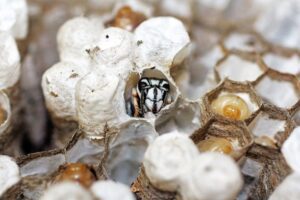Hello Friends!
Join us in celebrating Pollinator Health!
As stewards of the environment, we can all make a difference in promoting pollinator health. Simple actions like buying local honey, supporting pollinator-friendly gardens, or hanging up a hummingbird feeder can have a big impact. Plus, sharing your efforts with friends and neighbors helps spread the word. You might already be helping more than you realize!
Who are the pollinators?
Without honey bees, butterflies, birds, moths, flies, and even bats, our food supply would simply vanish. Surprised that bats are considered pollinators? They not only help pollinate, but they also eat mosquitoes! (I could go on about how much I adore bats, but that’s a story for another time.) For now, just imagine walking into your grocery store and finding the produce section completely empty. It’s a chilling thought, isn’t it?
The Honey Bee, Our Hero

When you think of pollination, honey bees are probably the first to come to mind. They are responsible for pollinating 33% of our food. Yes, you read that right, 33%! That is a huge impact. Honey bees truly are incredible. I am so passionate about their importance that when I found this infographic, I knew I had to share it with you.
Other Types of Bees and Wasps
Now that you know just how AMAZING honey bees are, let’s take a look at some of the other stingers in the sky. This way, you’ll be able to tell which bees are helpful and which ones you might want to avoid. 🙂
YellowJackets
Also known as ground bees, yellow jackets can be aggressive and quick to attack. They show no mercy if you get too close. If it’s not fuzzy and brightly striped in yellow and black, it’s best to steer clear! These are the ones you’ll often see at BBQs and picnics, usually drawn to open cans of soda or leftover food.
Paper Wasps
Paper wasps are long and slender with dangling legs. They enjoy building their paper-like nests on window shutters, swing sets, or under the eaves of houses. If you get too close to their nest, they will sting, and trust me, it hurts. These wasps feed on other bugs and can become aggressive if they feel threatened.
Bumble Bee
This one is pretty laid-back. They’re large, fuzzy, and I’d call them the “teddy bear” of the stinger world. These pollen collectors and nectar lovers buzz loudly and fly in a slow, somewhat clumsy way. So cute! While they can sting, they usually won’t unless you provoke them.
Bald-faced Hornet
Don’t try this one at home! The bald-faced hornet, which is actually a black-and-white wasp (not a true hornet), is probably the scariest of them all. These hornets build basketball-sized paper-like hives in tree branches and are fueled by aggression. Definitely NOT a pest you want to deal with on your own!
If you need help protecting your home or family from aggressive stinging insects this season, reach out to us for a free quote!








